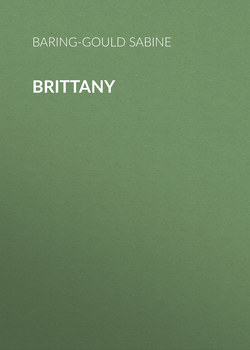Читать книгу Brittany - Baring-Gould Sabine, Baring-Gould Sabine - Страница 5
IV. Antiquities
ОглавлениеThe prehistoric remains that abound in Brittany consist of Dolmens, i. e. a certain number of stones set on end rudely forming a chamber, and covered with one or more capstones.
The Allée Couverte is a dolmen on a large scale. Both served as family or tribal ossuaries.
The Menhir is a single standing stone; the alignment is a number of these uprights often in parallel lines, extending some distance.
The cromlech according to the signification accorded to it in France is a circle of standing stones.
The lech is the lineal descendant of the menhir. It is a stone often bearing an inscription, or a rude cross, set up by the British or Irish settlers. The lech is sometimes round.
Tumuli and Camps are numerous, but they are not often referred to in the following pages.
Of Roman remains, there are relics of an aqueduct near Carhaix, and there have been numerous villas uncovered, notably near Carnac, but these are almost all recovered with earth. The most remarkable Roman monument extant is the Temple of Mars, a fragment near Corseul.
The Venus of Quinipili, a Roman Gallic idol, shall be spoken of under the head of Baud.
Of early churches, – earlier than the 10th cent. there are none, there are but the crypt of Lanmeur and perhaps the arches and piers of Loconnolé near Morlaix, and possibly the Western arches of Plouguer by Carhaix that can be attributed to the 10th century. After that come considerable remains of Romanesque churches, beginning with the plain unmoulded round arch resting on plain rectangular piers, and gradually becoming enriched. (11th century and beginning of 12th.)
First pointed, with lancet windows, no tracery, and arches struck from two centres. (Middle of 12th century and beginning of 13th.)
Second pointed or Geometrical. Tracery becomes rich in windows, but always of a geometrical design. (Middle of 13th century and throughout 14th.)
Third pointed or Flamboyant. Tracery like flame, recurving, gradually all cusping abandoned. Arches employed in ornamentation struck from four centres. (15th century and beginning of 16th.)
Rénaissance. At first classic detail with Gothic outline, and tracery in its last decay. At last all tracery abandoned, and design stiffens and loses all Gothic feeling. (Middle of 16th century to middle of 17th.)
Baroque. Round headed windows, no tracery, clumsy mouldings, no taste whatever, but barbarous enrichment. (End of 17th century and 18th.)
